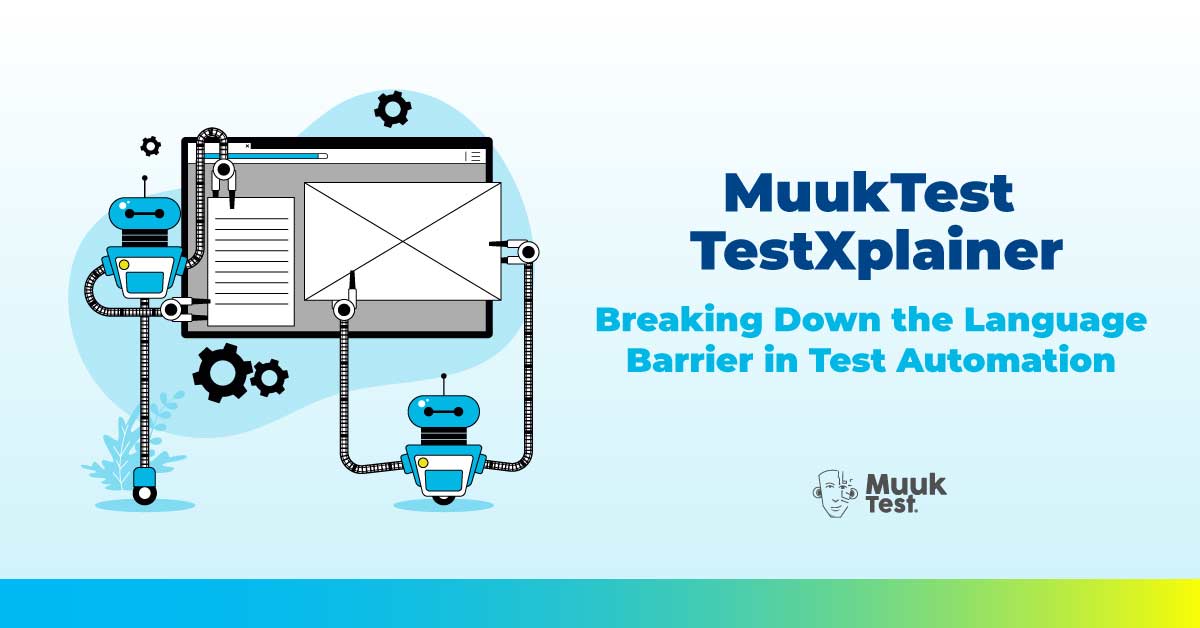Generative AI today brings a quantum leap in the world of software engineering, revolutionizing how an entire industry operates. The software testing revolution will start with its people. Roles such as testers, automation engineers, test managers, and architects, will apply AI to change software testing. At the end of the day, AI and testing both need each other.
Today, let’s dive a bit deeper into the skills required to build an effective AI-assisted testing team. Integrating AI into the current workflow will not be possible unless teams get serious and start upskilling themselves around AI-related skills. In this guide, let me help you understand the essential skills and roles needed for an AI-assisted testing team.
Breaking down, let’s categorize the core skills into three areas:
- AI
- Testing
- Automation
We will cover each of them in detail in the upcoming sections along with resources to learn and master these foundational skills:
AI Skills
A lot of testers' understand AI as either ChatGPT or minor AI testing tool features such as auto healing or locator updates. AI and its possibilities, however, are quite broad.
Before navigating the wide AI landscape, one needs to start with the basics.
1. Basics of AI and ML
AI, or Artificial Intelligence, refers to the simulation of human intelligence in machines. When we talk about applying AI in testing, we usually refer to machine learning (ML), a subset of AI where systems can learn from data to make decisions without explicit programming. The first step in using ML or AI effectively is to define the testing problems you want to solve. This can range from writing scripts for your test cases to generating test data. You never know the possibilities that can be unlocked.
Check out this insightful blog for a deep dive into the basics: AI and Machine Learning Apps in Software Testing (muuktest.com)
2. AI Models aka Large Language Models (LLMs)
As the name suggests, large Language Models (LLMs) are trained on large amounts of data in the magnitude of petabytes of data. This data comes from diverse sources such as:
- Books
- Articles
- Websites
- Text Blogs
- Images
- Media Files,
- and other data sources available on the web.
Large Language Models (LLMs) are the backbone of any Generative AI system. At the time of writing, our industry is working heavily towards creating general-purpose LLMs. As of today, some of the most popular LLMs are:
- Open AI GPT: It is one of the pioneers of LLMs. GPT stands for Generative Pre-Trained Transformers. Open AI GPT powers ChatGPT. There are many variations that it offers. Some of the popular ones are:
- GPT 3
- GPT 3.5
- GPT 4
- BERT: It stands for Bi-directional encoder representation from transformers. This is developed by Google. Gemini (previously known as BARD) is powered by BERT.
- LLama: It is a model developed by Meta (Facebook). It stands for Large language model meta AI. LLama 2 is an open-source model.
3. LLM Syndromes & Side-Effects
While LLMs are powerful, by design they have their own set of challenges— known as "LLM syndromes." These include issues like generating plausible but incorrect information or bias inherent in training data. Being aware and mitigating these issues is a critical step in leveraging AI for testing. Check out the detailed list & explanation of LLM syndromes in this insightful read by James Bach & Michael Bolton: Large Language Model Syndromes – DevelopSense
4. AI Testing Tools
Becoming familiar with popular AI testing tools is essential. These tools can be used to automate repetitive tasks, analyze test coverage, or even predict potential areas of failure. New tools are emerging in the market every day. While some of them promise more than they can deliver, very few of them actually stand out.
Check out the AI-powered TestXplainer by MuukTest that interprets Test Automation for Stakeholders: MuukTest’s AI-based Tool Interprets Test Automation for Stakeholders.
5. AI Ethics
As a professional, it is important to ensure that AI systems are fair, transparent, and unbiased. We need to take care of the security and sanctity of the data that we feed into any AI system. Governance models need to be developed around AI while educating team members about the ethical use of AI. As testers, we must also be responsible and incorporate ethical considerations into our AI models and testing processes. Check out this manifesto by Ethical AI for key considerations to be taken care of: Manifesto | AI ETHICAL (ai-ethical.com)
6. Prompt Engineering
It involves creating prompts to guide AI models. A prompt is like a textual instruction to an AI agent. Prompt engineering is an important skill in leveraging Gen AI chatbots such as ChatGPT or Microsoft Copilot. Prompt engineering is a new discipline that consists of different prompting techniques for different use cases. Each technique yields different results. Learning to fine-tune these prompts will help get the desired output from AI models. You can learn about various prompting techniques in detail here: Prompt Engineering Guide | Prompt Engineering Guide<!-- --> (promptingguide.ai)
Testing Skills
With the rise of AI, the need for core testing skills is far more important than ever. Good testing skills when combined with AI can solve real-world testing problems. As general-purpose LLMs are trained on publicly available data, most solutions that they offer are going to be limited. The best way to leverage AI in testing would be to have expertise in foundational testing skills such as:
1. Test Design
AI can easily generate a large number of tests. Most of them may be less useful if they were not designed to expose the issues in your application. Designing effective tests is a crucial testing activity. This includes understanding the application under test, defining tests, and ensuring test coverage. Check out this insightful read on the MuukTest Blog to learn in-depth about Test Design & its techniques: Exploring Test Design & Case Design Techniques (muuktest.com)
2. Risk Analysis
Testing is an act of finding and evaluating risks. Risks and their severity on the system help prioritize overall testing efforts. It is important to continuously identify and mitigate risks in:
- Project
- Product
- People, i.e., stakeholders, customers, engineering team, etc.
Knowing where failures are most likely to occur ensures that the critical areas are tested thoroughly.
3. Exploratory Testing
It involves designing tests, executing them, and learning from the results simultaneously. It is a systematic approach that relies on a tester's creativity and intuition. Exploratory testing helps you to learn more about an application and identify areas that need to be targeted for scripted checks. Learn in-depth about exploratory testing on the MuukTest blog by me here: An Intro to Exploratory Testing (muuktest.com).
4. Bug Advocacy
It is a persuasive art of advocating for bug fixes to the development team. This includes writing compelling and influential bug reports and motivating the team to fix these issues based on impact. Check out this detailed blog about Bug Advocacy on the MuukTest blog by me here: Bug Advocacy: Enhancing Software Quality (muuktest.com).
5. Requirement Engineering
Understanding, defining, and exploring requirements is crucial as a software tester. Finding hidden requirements is a skill that comes with experience. Test managers and leads should proactively review and explore requirements for a healthy testing project. Check out the Dos & Don’ts while reviewing requirements as a tester on the MuukTest blog here: Reviewing Requirements Dos and Don'ts for QA Managers (muuktest.com).
6. Test Strategy / Planning
Solid test planning drives the entire testing process. The strategy should cover detailed intricacies such as project environment, product elements, quality criteria, and test techniques. It is important to master the skill to create customized test strategies crafted for your project needs. Learn more about it on MuukTest Blog here: Testing to Fit Requirements Through Customized Test Strategies (muuktest.com).
7. Test Management
Managing the overall testing effort involves planning, tracking, and controlling the testing process. Testers need to learn the art of providing accurate effort estimation, and time for planning and managing testing activities. Once effective management is done, the planning of testing activities can be organized and aligned with project goals.
Automation Skills
A lot of testers interpret testing with automation. These are entirely different disciplines. If learned well, the synergy of these skills can create tremendous outputs for your testing work. Here is a list of core automation skills needed for AI-assisted testing teams.
Design Patterns & Principles
Automation is fundamentally a software development activity. Understanding design patterns and paradigms helps you write maintainable and scalable test automation scripts. The concept of SOLID principles is crucial in designing a clean project architecture. You can learn about design patterns and principles from this article on the MuukTest blog: Three Important Test Design Patterns (muuktest.com)
Clean Coding
You write code once. Most of the time in a project is spent on editing, modifying, and debugging the code. It becomes crucial to write code that is readable, simple, and elegant. Implementing clean coding practices ensures that your automated tests are easy to read, maintain, and extend.
Programming Fundamentals
Automation is a fundamental development activity, you need a programming foundation. Understanding the basics of programming, language features, IDE extensions, and shortcuts is essential in writing better-automated tests.
Tools
Familiarity with automation tools for UI, API, and unit testing is crucial for applying automation at various layers of your applications. Alternatively, you can learn a no-code test automation solution, such as MuukTest TestXplainer. Tooling in general is a wide concept. Be open to evaluating, experimenting, and exploring various tools for different use cases.
Platforms & Frameworks
Knowledge of platforms and frameworks like Linux, Dotnet, JDK, Docker, Kubernetes, Gitlab, etc. helps in extending the scope and distribution of your automation to different target areas. You can also use them to extend the capabilities of your automated solution.
To summarize, building an AI-assisted testing team requires a mix of AI, testing, and automation skills. By developing these skills among team members and defining clear roles and responsibilities, you can harness the power of AI to enhance your existing software testing processes, thus driving innovation.
Happy testing!







.png)



